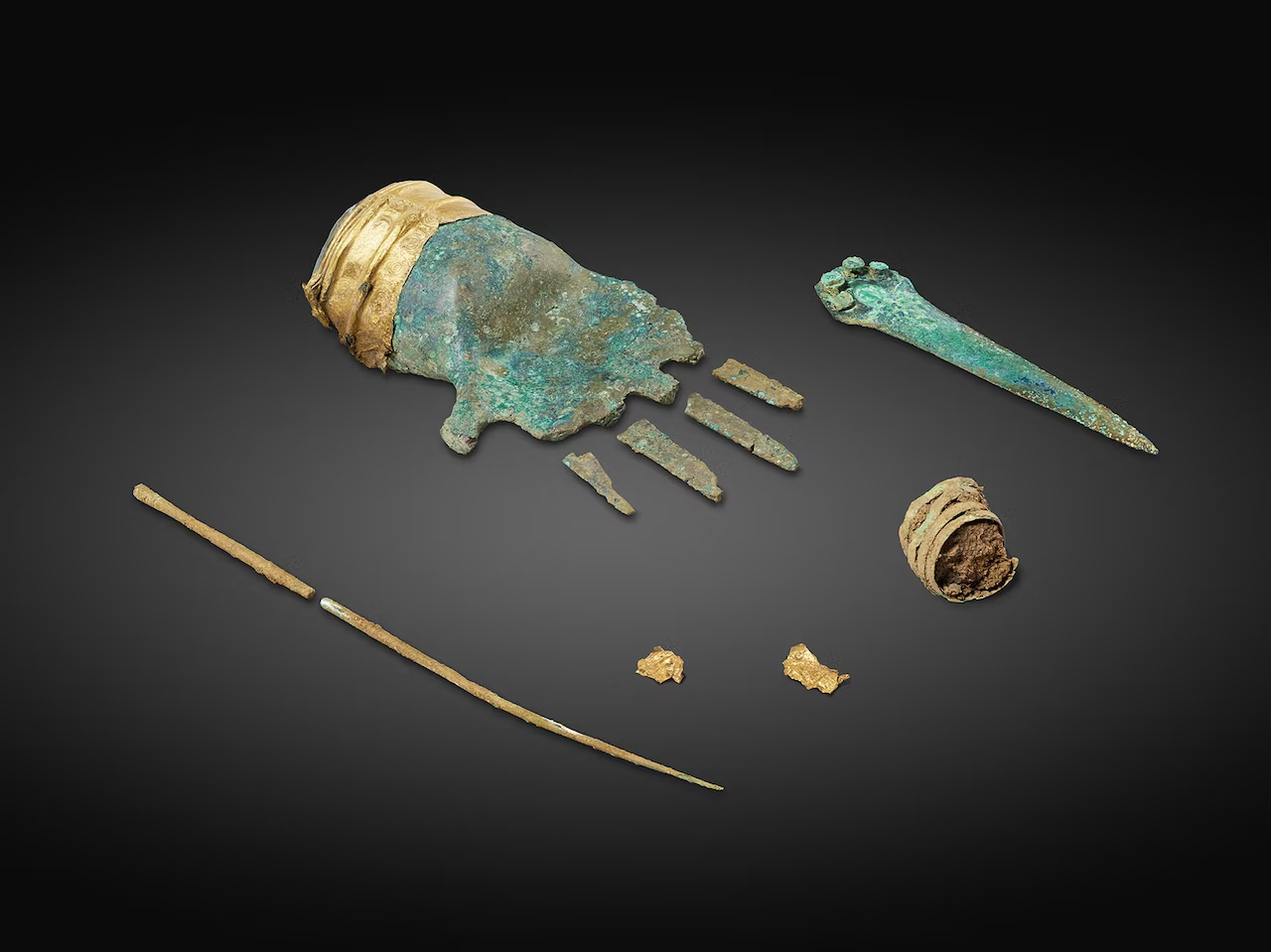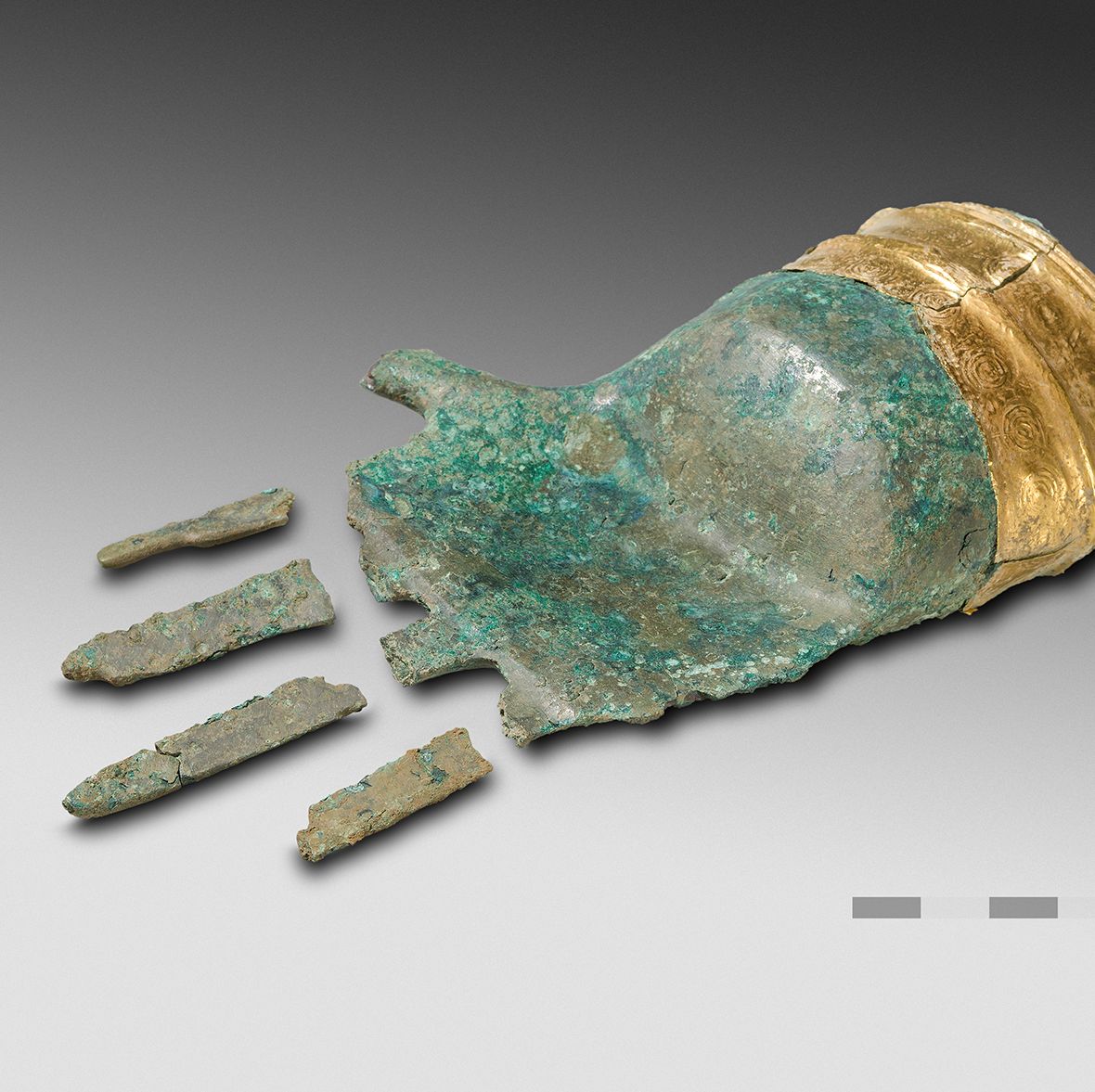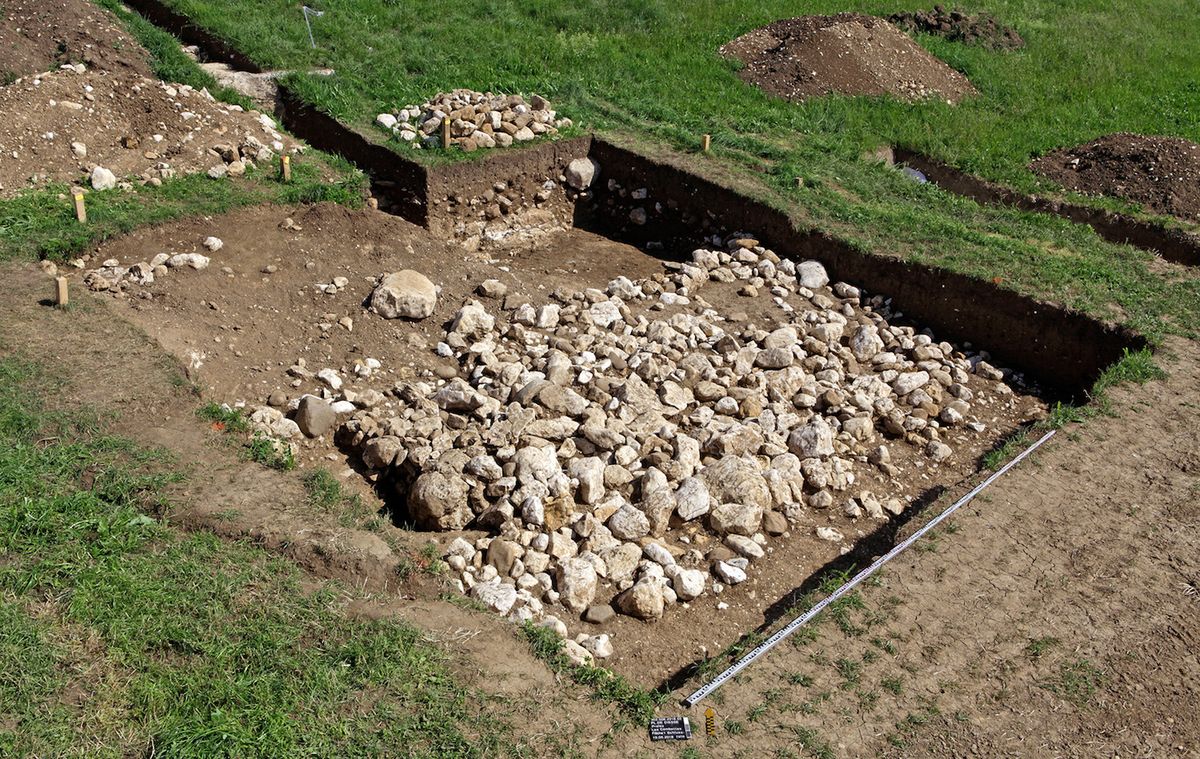Hands of the Past 3,500-Year-Old: Revealing the Significance of Europe’s Earliest Metal Body Part

Archaeology has a remarkable way of unearthing the mysteries of the past, revealing fragments of history that challenge our preconceptions and expand our understanding of ancient civilizations. In a stunning discovery that has captivated the scientific community, Swiss archaeologists have recently announced the finding of what they believe to be the earliest metal representation of a human body part ever discovered in Europe. This remarkable 3,500-year-old bronze hand, adorned with a cuff of gold foil, offers a tantalizing glimpse into the sophisticated cultural and technological achievements of the Bronze Age.
The Remarkable Discovery

The story of this ancient artifact began in 2017, when treasure hunters using metal detectors near Lake Biel in western Switzerland uncovered a remarkable find – a slightly smaller than life-sized bronze hand, along with a bronze dagger and a rib bone. Intrigued by the unusual nature of the discovery, the treasure hunters promptly turned over their findings to the authorities, setting in motion a remarkable archaeological investigation.
“We had never seen anything like it,” says Andrea Schaer, head of the Ancient History and Roman Archeology Department at the Bern Archaeological Service. “We weren’t sure if it was authentic or not – or even what it was.” Determined to unravel the mystery, the archaeologists set out to determine the age and significance of this extraordinary object.
Dating the Bronze Hand
Through radiocarbon dating of the organic glue used to attach a layer of gold foil to the sculpture’s “wrist,” the researchers were able to determine that the bronze hand dated back to the middle Bronze Age, between 1,400 and 1,500 B.C. This remarkable discovery not only confirmed the authenticity of the object but also highlighted its immense historical value, making it the earliest known metal representation of a human body part found in Europe.
Uncovering the Grave Site

Eager to learn more about the context and significance of the bronze hand, the archaeologists returned to the site in the spring of the following year, guided by the treasure hunters who had initially made the discovery. After a seven-week excavation, the team uncovered a badly-damaged grave located on a plateau above Lake Biel, near the village of Prêles.
Within the grave, the researchers found the remains of a middle-aged man, along with a long bronze pin, a bronze spiral that may have been worn as a hair tie, and fragments of gold foil matching those adorning the bronze hand. Most significantly, they recovered one of the sculpture’s broken fingers, providing strong evidence that the hand was originally buried alongside the man.
The Significance of the Find
The discovery of this bronze hand is particularly significant for several reasons. Metal objects in Bronze Age burials are relatively rare, and gold is almost never found in such contexts in Switzerland. Moreover, as Stefan Hochuli, head of the Department of Monument Preservation and Archaeology in the nearby canton of Zug, notes, “the fact that we know of thousands of Bronze Age graves and have never found anything like this shows it’s pretty special.”
Indeed, the archaeologists believe this sculpture to be unique not only in Europe but potentially beyond, as no other comparable finds have been documented. “It must have been placed on something, but we don’t know what,” Schaer muses, acknowledging the intriguing questions that surround the hand’s original purpose and placement within the grave.

Potential Interpretations
The researchers have proposed several possible interpretations for the significance and function of the bronze hand. The sculpture’s socket suggests that it could have adorned a larger statue, been mounted on a stick and wielded like a scepter, or even been worn as a prosthetic as part of a ritual. However, without the context provided by the original undisturbed burial, the true purpose of this remarkable artifact remains elusive.
Broader Implications
The discovery of the bronze hand not only provides a tangible connection to the past but also offers a glimpse into the sophisticated cultural and technological achievements of the Bronze Age. As Hochuli observes, “Finds like this remind us how many gaps there still are in our knowledge about the past. It gives us a glimpse into the spiritual world of this society – and it’s a lot more complex than we often think.”
Conclusion
The unearthing of the 3,500-year-old bronze hand in Switzerland represents a remarkable and thought-provoking archaeological finding, shedding new light on the material culture and belief systems of the Bronze Age. This extraordinary artifact, with its intricate details and intriguing symbolism, serves as a testament to the ingenuity and artistry of our ancient ancestors, reminding us of the enduring mysteries that continue to captivate and challenge our understanding of the past. As the bronze hand goes on display for the world to marvel at, it stands as a testament to the power of archaeology to uncover the hidden stories that lie buried beneath the surface of time.
Video
News
The Hanging Temple: China’s 1,500-Year-Old Cliffside Marvel of Faith and Engineering
The Hanging Temple: China’s 1,500-Year-Old Cliffside Marvel of Faith and Engineering Perched precariously on the cliffs of Mount Heng in Shanxi Province, China, the Hanging Temple, also known as Xuankong Temple, Hengshan Hanging Temple, or Hanging Monastery, is an architectural…
The Willendorf Venus: A 30,000-Year-Old Masterpiece Reveals Astonishing Secrets
The Willendorf Venus: A 30,000-Year-Old Masterpiece Reveals Astonishing Secrets The “Willendorf Venus” stands as one of the most revered archaeological treasures from the Upper Paleolithic era. Discovered in 1908 by scientist Johann Veran near Willendorf, Austria, this small yet profound…
Unveiling the Maya: Hallucinogens and Rituals Beneath the Yucatán Ball Courts
Unveiling the Maya: Hallucinogens and Rituals Beneath the Yucatán Ball Courts New archaeological research has uncovered intriguing insights into the ritual practices of the ancient Maya civilization. The focus of this study is a ceremonial offering found beneath the sediment…
Uncovering the Oldest Agricultural Machine: The Threshing Sledge’s Neolithic Origins
Uncovering the Oldest Agricultural Machine: The Threshing Sledge’s Neolithic Origins The history of agricultural innovation is a fascinating journey that spans thousands of years, and one of the earliest known agricultural machines is the threshing sledge. Recently, a groundbreaking study…
Nara’s Ancient Sword: A 1,600-Year-Old Protector Against Evil Spirits
Nara’s Ancient Sword: A 1,600-Year-Old Protector Against Evil Spirits In a remarkable discovery that has captured the attention of archaeologists and historians alike, a 7.5-foot-long iron sword was unearthed from a 1,600-year-old burial mound in Nara, Japan. This oversized weapon,…
The Inflatable Plane, Dropped Behind the Lines for Downed Pilots
Experimental The Inflatable Plane, Dropped Behind the Lines for Downed Pilots The Inflatoplane from Goodyear was an unconventional aircraft developed by the Goodyear Aircraft Company, a branch of the renowned Goodyear Tire and Rubber Company, also famed for the Goodyear…
End of content
No more pages to load











